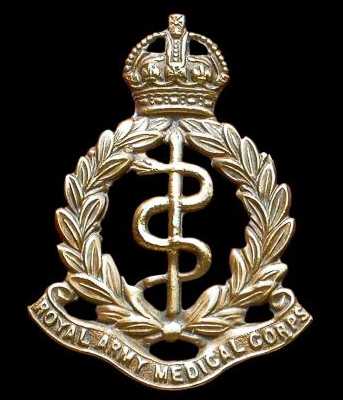
Harry Holley

90th Field Ambulance
Private 89476
 |  | |
| Royal Army Medical Corps 90th Field Ambulance Private 89476 | ||
| Died 7th August 1917 |
Harry Holley's Parents | ||
|
Harry Holley’s
parents were Henry 'Harry' Holley (senior) and Sarah Holley (née Gibson). Both Harry Holley (senior) and Sarah Gibson spent their early
years growing up in the same street - Church Street - in Beckington, so would have been known to
each other from childhood. Both grew up in families with fathers who worked as
labourers, with Harry’s father specialising in road building, while Sarah’s
father was a farm hand. In 1881, however, Sarah, at the age of 17, was a domestic
servant in the household of a Mr William Wood, who ran a woollen cloth mill at
Standerwick (near Frome), employing 68 people in his factory. It is not known
were Mr Wood’s factory stood, but the area around Beckington & Rode was a
long-established centre for wool manufacture. From http://www.beckington.org.uk/the-village/history.htm: In the 19th century, firstly in 1823, Clifford Mill was advertised for
sale "Clifford Mill - capital water fulling mill, with several cottages,
stable and outhouses, and 28 acres of superior pasture land". Secondly in
1832, Beckington Mills were advertised for sale "Mill - woollen factory
60ft long, with 4 floors, the principle part being 20ft wide. The machinery is
worked by the same water wheel as the flour mill - a powerful groundshot water
wheel" | ||
The Holley Family |
| Harry
(senior) and Sarah were married in 1887 at St Mark’s church in Bath. It
seems
unusual for a couple whose families both lived in their home village of
Beckington, just a dozen miles away, to marry in Bath. Indeed, we don’t
know
what brought either of them to the city (in Sarah's case it was
probably a position in service in a Bath household), or why the wedding
was not held in their home village. |
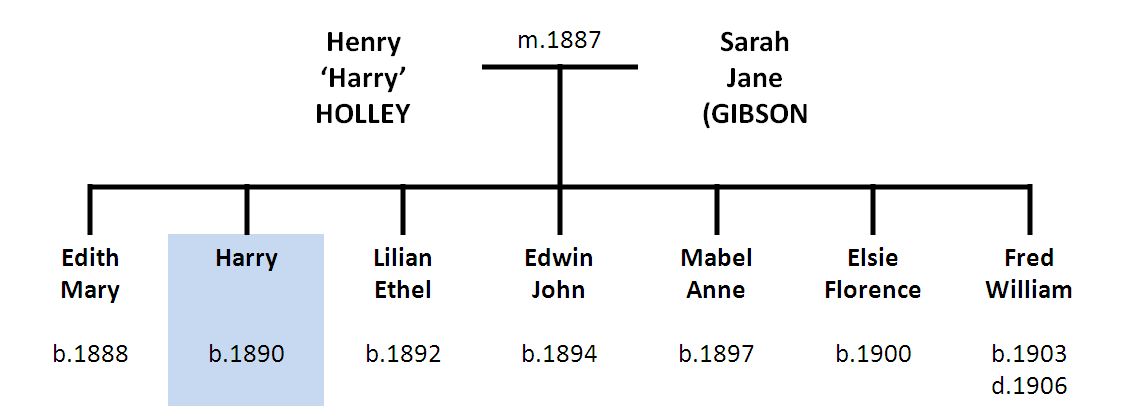 |
|
In 1891, the family was living at Moorfields Cottages, Edith and Harry having already been born. The family lived with the children's uncle Tom, the brother of Harry (senior). Harry's sister Lilian was also born here subsequently. The
1883 map shows that, before the Oldfield Park area (as we now know it) was
completely developed, there was a cluster of houses in the area of what is now
Shaftesbury Mews, continuing north-west into what is now Moorland Road. There
was a larger property called Moorfield House, as well as smaller cottages, farm
buildings and a couple of newly-built terraces. |
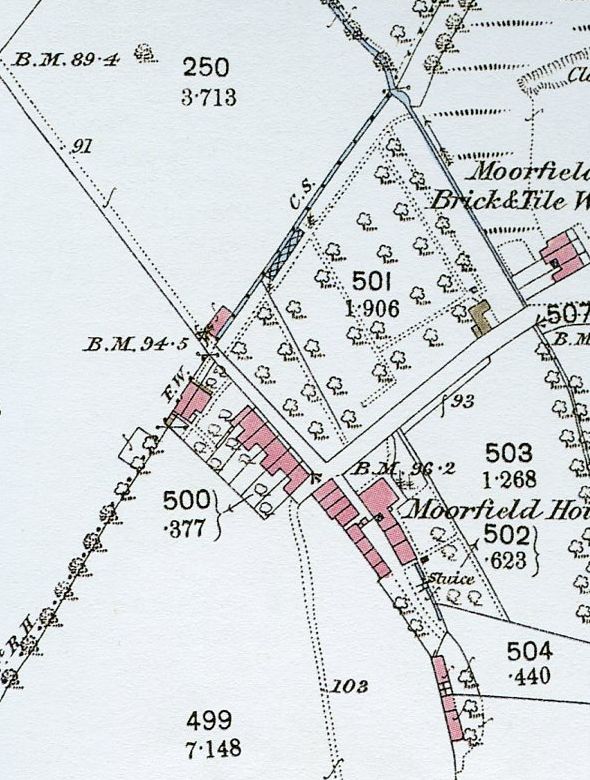 | ||
|
The terrace of houses near the field/parcel number ‘500’ on the map was called Moorland Terrace; this is now the row of shops at the beginning of Moorland Road that includes the Giant Party Shop, Sheriton Jewellers etc. (for orientation, the Scala now stands on the site of parcel number 501). On the same alignment, across the
road to the south-east were four houses called Moorfields Cottages. These eventually
had to make way when the ‘Durley Park’ development was built. ‘Durley Park’
included Beckhampton Road, St Kilda’s Road and Faulkland Road (not to be
confused with the much later road called Durley Park, off Oldfield Lane). |
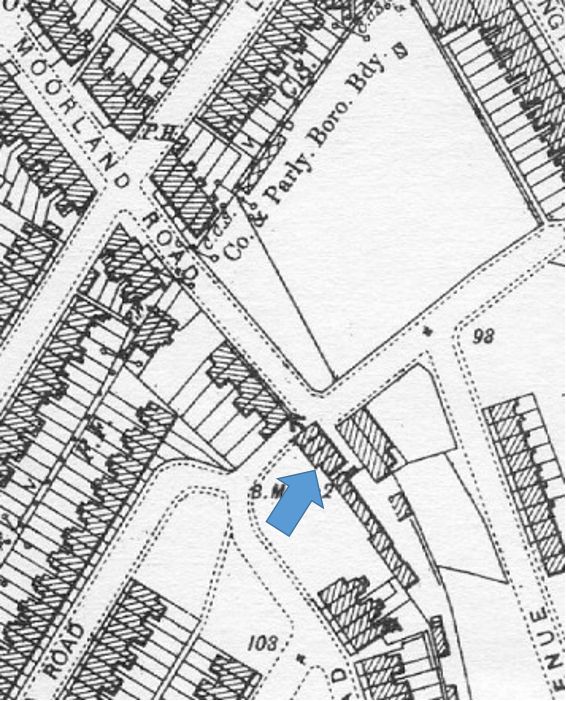 | ||
|
This 1902 map of the south-eastern end of Moorland Road shows how
Moorfields Cottages (marked with an arrow) restricted the road through
to the later development of St Kilda’s Road (bottom left) and Beckhampton Road. |
|
The Holley family moved on from Moorfields Cottages some
considerable time before they were demolished, taking up residence in Herbert Road, just
around the corner off Moorland Road. From 1894-1908, they lived at number 20,
which is where Harry
would have
lived for his entire school career (circa 1895-1902). It is also where
the younger four siblings were born. Youngest brother Fred died as an
infant in 1906. |
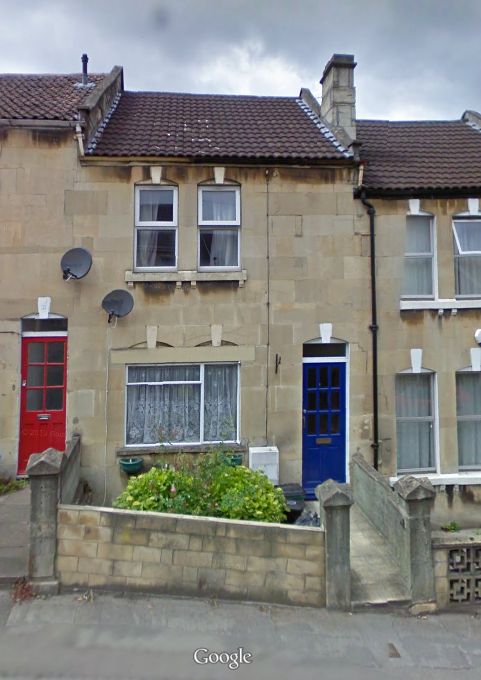 | ||
|
20 Herbert Road; home of the Holley family circa 1894-1908 |
|
Later, the family lived at 33 South Avenue (1909-1911) and then at 102 West Avenue. Harry’s father (Harry senior) was always listed in census entries and in the Bath Directory as a stonemason. |
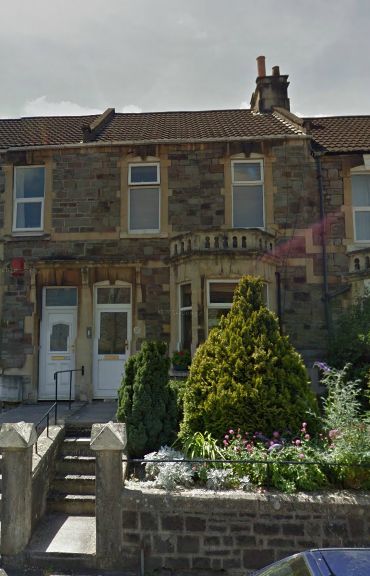 | ||
|
ABOVE: 33 South Avenue; home of the Holley family circa 1909-11 BELOW: 102 West Avenue; the family home after 1911 | ||
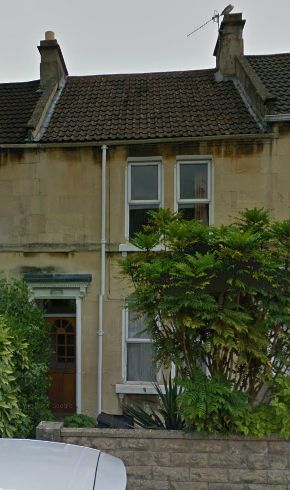 |
|
The 1911 census shows that Harry
was working as a 'Carter, Coal', probably meaning that he was
delivering coal around the district. His father was listed as a 'Wall
Mason, Stone', with sisters Edith (a 'Daily work domestic' aged 22),
Lilian ('Corset boner factory hand' - probably at the Charles Bayer
factory on Lower Bristol Road - aged 19), brother Edwin ('Milk boy'
aged 16) and schoolgirls Mabel (13) and Elsie (11). |
Harry Holley in WW1 | ||
Royal Army Medical Corps
Harry Holley's military records survive in full. From these, we know that he enlisted at Monkton Combe on 19th April
1915, aged 24 years, 300 days and standing 5 feet 8 inches tall. He signed up initially
with the 3rd/2nd South Western Mounted Brigade Field
Ambulance (serial number 1978). The term of enlistment was ‘Period of War’. His
enlistment form survives, as does the separate agreement to serve outside the
UK, if required. Other surviving documents include his medical records, which detail
inoculations and a tooth extraction! | ||
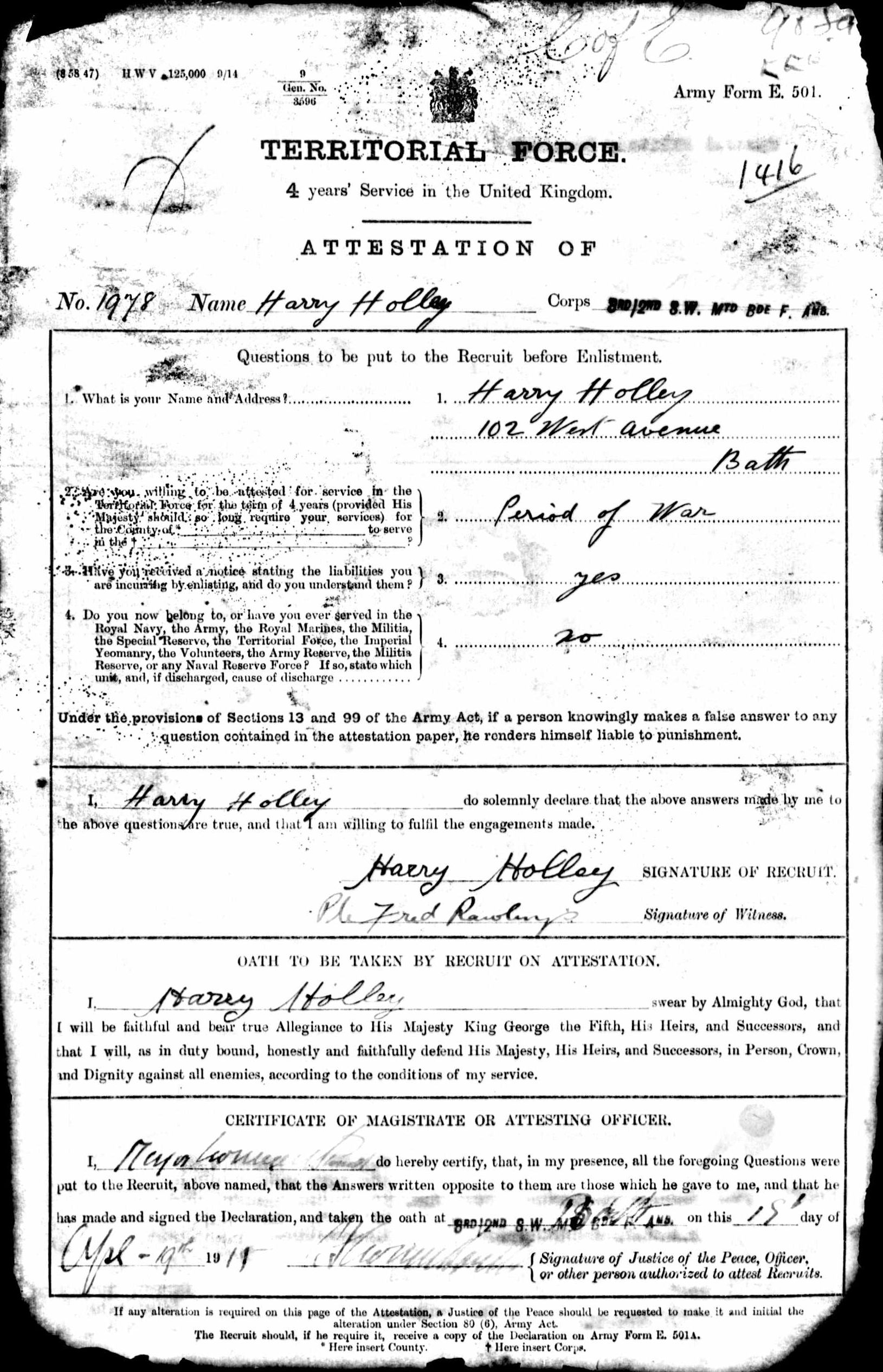 |
|
Harry’s posting to an ‘RAMC Training Centre, ‘Y’ Company’ occurred on 11th November 1916, at which point he received the serial number 89476. This website details the structure and role of the ‘Field Ambulance’
sections within the RAMC: http://www.1914-1918.net/fieldambulances.htm 90th Field Ambulance On 19th May 1917, Harry Holley was then ‘received from CC Cyclist Base Depot’, sailing with 'Q.Q.Q. Reinforcements' from Southampton to Le Havre on 17th May, and travelling on to Rouen on 18th. He was then posted to 90th Field Ambulance in the field on 26th May 1917. |
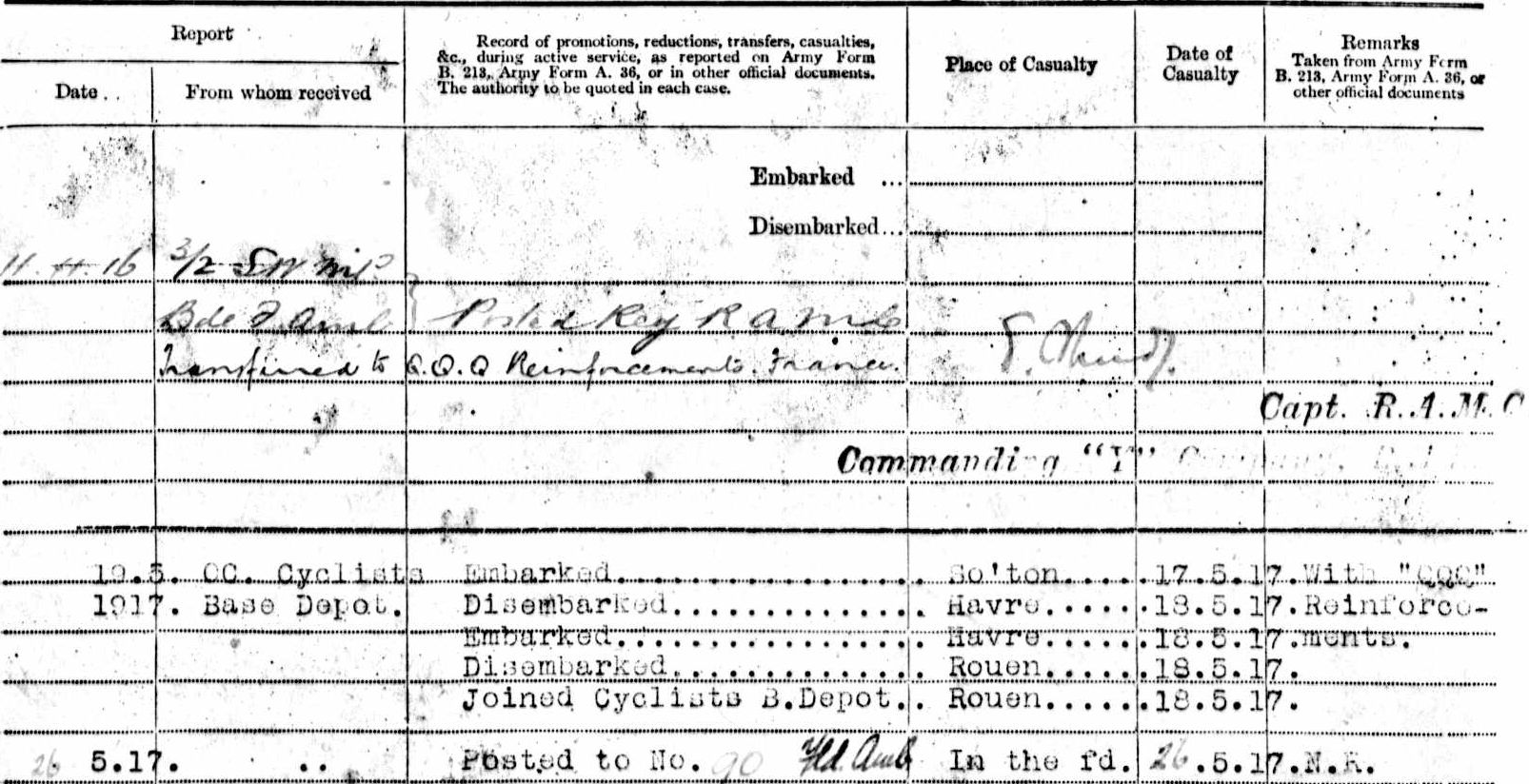 | ||
| Harry Holley's active service record. The last line shows him being posted to 90th Field Ambulance in the field on 26th May 1917. |
|
90th Field Ambulance was with 32nd Division, 14th Corps in the 5th Army. The unit diary for 27th May, while stationed at Mezieres mentions the arrival and states: “22 RAMC reinforcements arrived during afternoon and are taken on strength accordingly”. The unit diary notes admissions of the sick & wounded on a day-to-day basis, also noting those forwarded to other treatment centres or returned to active duty. Naturally, with the conditions in the trenches, it was disease as much as injury that affected the troops and sometimes the RAMC’s own personnel were affected. On 30th May, 90th F.A. marched to Demuin then, on June 1st, entrained at Marcelcave railway station for the journey to Bailleul and new brigade quarters at Le Verrier, arriving at midnight and taking billets at Ferme du Bois. On June 6th, the whole of 90th F.A. packed up and was ready to be on the move at 30 minutes’ notice and remained on standby until June 9th, at which point the orders were cancelled and everything unpacked again. This period was marked by periods of heavy shelling, as noted in the unit diary. On June 10th orders to pack were again received. On 13th, 14th infantry division marched to Eecke. The number of men who ‘fell out’ (i.e. could not continue marching and got left behind) concerned the commanding officer of 90th F.A. to the degree where he went to Brigade HQ to suggest that any future marches in the prevailing hot weather be undertaken at night. June 13th also saw the admission of cases of sunstroke to the Field Ambulance. On 15th June, the unit took buses to Coudekerque. Two days later they marched – this time in the evening – on to Coxyde via Dunkirk, Zuydcoote and Funnes. With a hint of pride in having been proved right, the CO notes in the unit diary: “The night march was a great success and the men arrived very fit after a 30 kilometre march”. The next few weeks saw regular comings and goings of sick and wounded, punctuated by references to enemy activity. A typical diary entry is that of July 19th: “Admissions: 1 officer and 11 OR (other ranks) and the same number sent to XV Corps MDS (main dressing station). 1 (returned to) Duty, 9 remain. There was considerable hostile activity last night and between 8pm and 10pm this morning 140 wounded passed through the ADS (advanced dressing station) which was again hit by shell fire but not damaged. Everything worked well and cases were easily evacuated.” The unit moved to Leffrinckoucke on 20th July, returning to Coxyde on 3rd August and took over from 1/1 West Riding Field Ambulance, with 50 ‘beds’ in an old factory for ‘lying cases’ and billets in nearby houses. 14th Infantry Brigade moved back into position in the La Panne area. |
Harry Holley's Death | ||
|
Harry Holley was killed on 7th August 1917, having served just 12 weeks at the front. On 10th August, the unit diary records: “No 89476 Pte H. Holley and No 112793 Pte H. Kain RAMC were killed outside Nieuport on night of 7th. Direct hit on dugout in the [?] while working for 92 Field Ambulance. Both bodies were brought down last night and they were buried in military cemetery Coxyde this afternoon.” The note on Harry Holley’s service record relating to his death is barely legible, but states ‘Received from 90th Field Amb, Killed in Action, in the field, 7.8.17.’ The ‘Remarks’ are completely illegible and the whole is signed by C.O. George Bray. This is an excellent illustraiton of how difficult it is to be sure where someone served (and/or died) unless you have a specific written reference. Even though we know that Harry Holley was with 90th Field Ambulance, we need the unit diary records to tell us that he died while 'on loan' to 92nd Field Ambulance. | ||
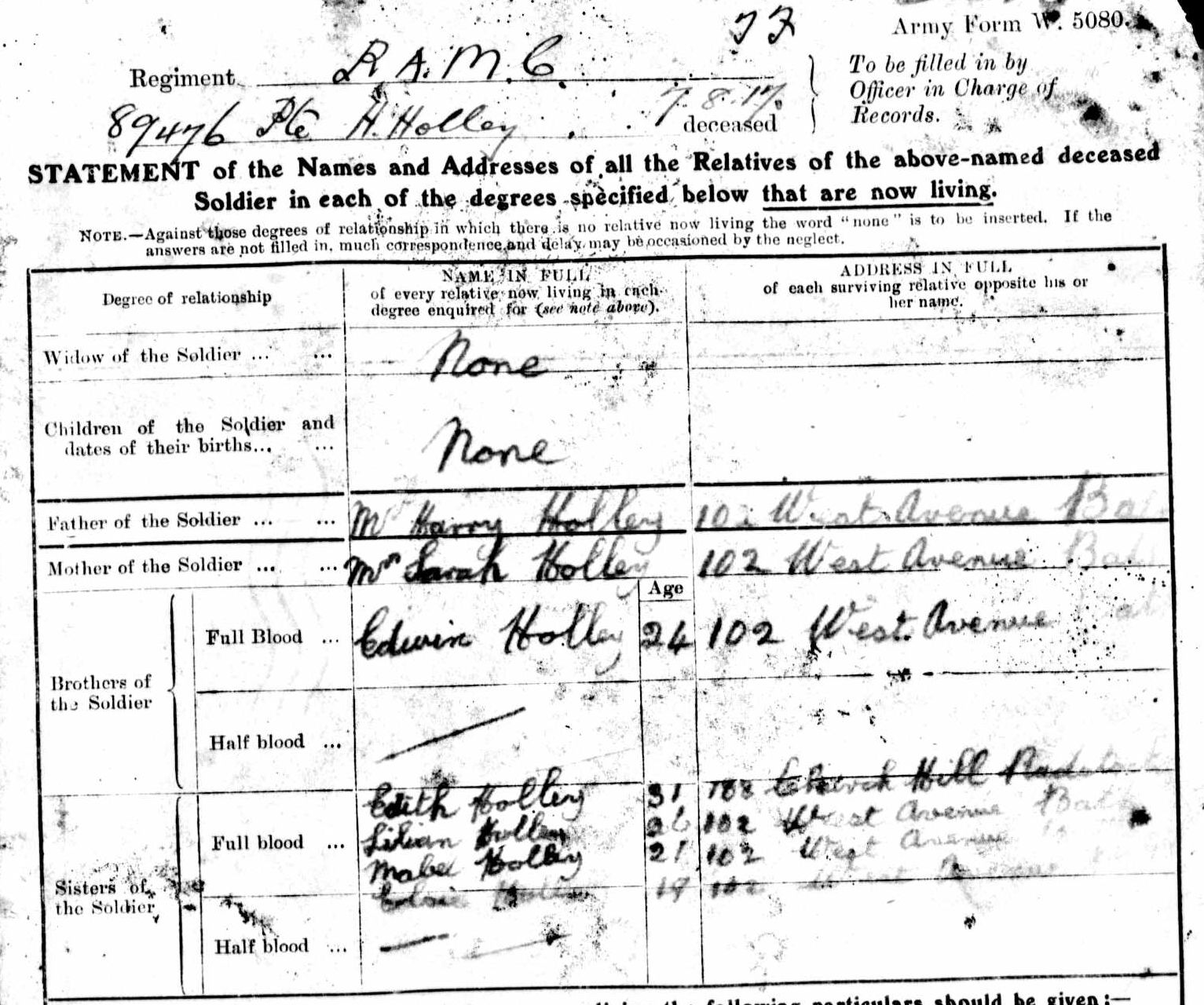 | ||
| This form W5080 from August 1917 lists the surviving relatives of Harry Holley, showing his father and mother living at 102 West Avenue with Edwin, Lilian, Mabel and Elsie. Sister Edith is living at this time at 108 Church Hill, Radstock. |
| The correspondence relating to the repatriation of Harry Holley’s personal effects, sent back to his parents, survives: |
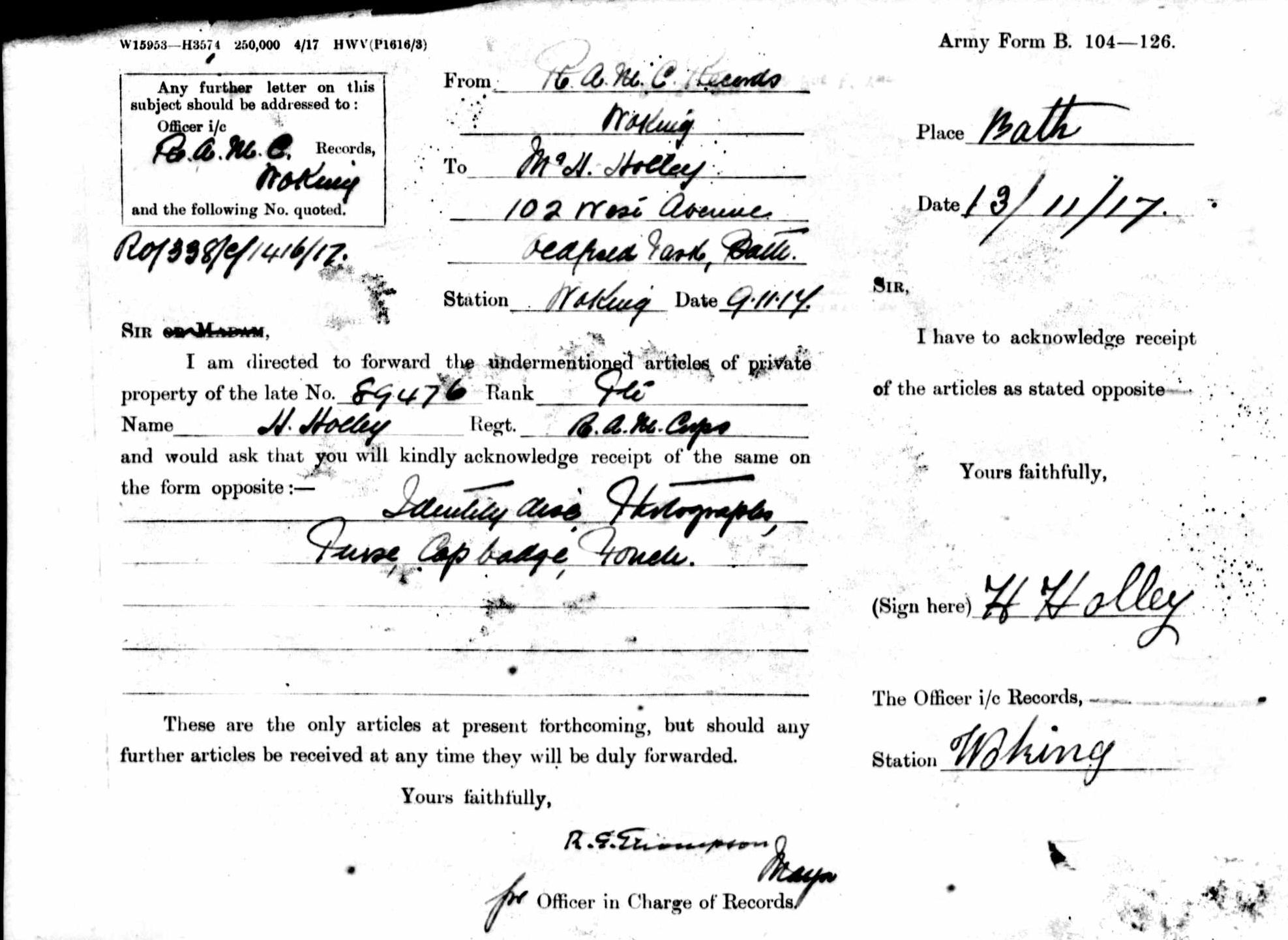 | ||
| Harry Holley's personal items were returned to his parents in November 1917. These are listed as 'Identity disc, photographs, purse, cap badge, pouch'. |
| It would of course be fascinating to know whether the items returned to Bath in 1917 are still in the family's possession. |
Burial | ||
| Harry Holley is buried in Coxyde Military Cemetery, Belgium From the Commonwealth War Graves Commission: "In June 1917, Commonwealth forces relieved French forces
on 6 kilometres of front line from the sea to a point south of Nieuport (now
Nieuwpoort), and held this sector for six months. Coxyde (now Koksijde) was about 10 kilometres behind the
front line. The village was used for rest billets and was occasionally shelled,
but the cemetery, which had been started by French troops, was found to be
reasonably safe. It became the most important of the Commonwealth cemeteries on
the Belgian coast and was used at night for the burial of the dead brought back
from the front line. | ||
| In July 2017, Mike and Kathy Sumsion of Bath visited Coxyde cemetery and found the grave of Harry Holley. It is great to know that this small corner of a foreign field is not forgotten in Harry Holley's home city. Mike sent us the following photographs: |
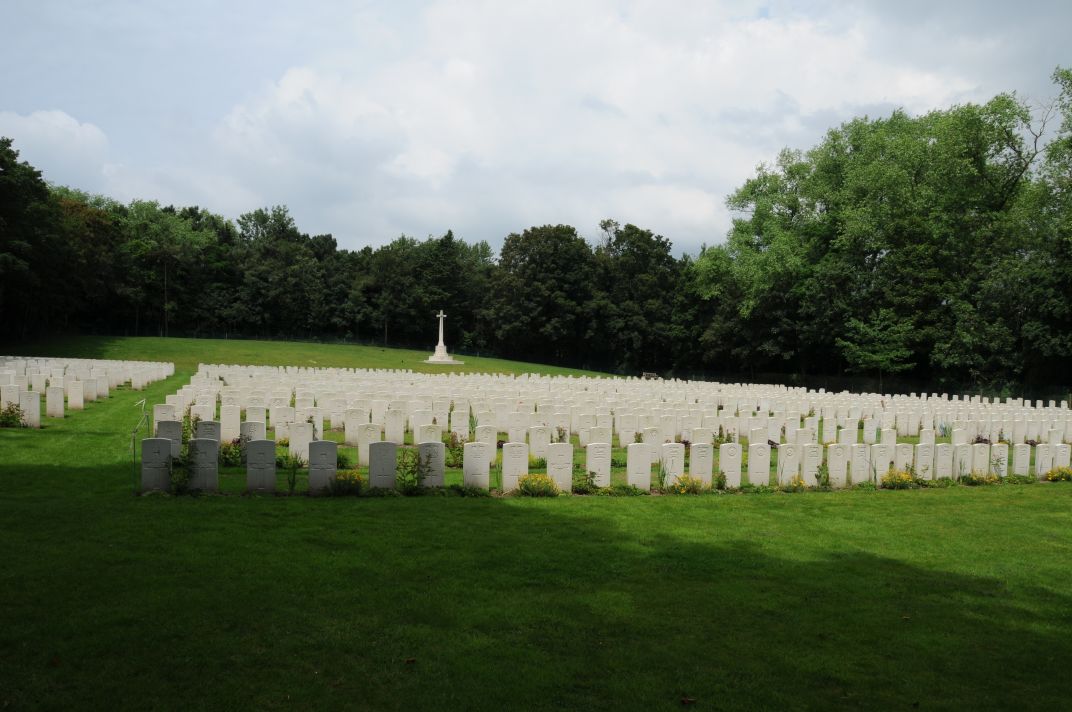 | ||
|
|
|
|
Decoration |
|
Harry Holley was awarded the
British War Medal 1914-18 and the Allied Victory Medal. posthumously.
His military records include the receipt form signed by his father for
these two medals. |
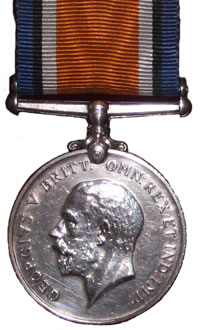 | 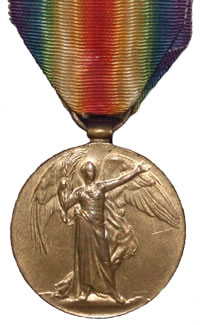 | ||
| British War Medal 1914-18 | Allied Victory Medal |
Commemoration | ||
| In addition to his commemoration on the South Twerton School memorial, Harry Holley is commemorated as follows: | ||
|
Bath War Memorial See separate page for details of the Bath War Memorial. Harry Holley's inscription: |
 |
|
Ascension Church Memorial As a parishioner of the Ascension Church, Harry Holley's name is inscribed on the oak tablet in the Church (see separate page for details of the Ascension Church Memorial): |
 |
Further Information |
After the WarHarry's father died in 1931 and his mother died in 1947. The house at 102 West Avenue continued as the home of Harry's sisters Lilan and Elsie well into the 1970s. | ||
Living RelativesIt would be great to hear from any living relatives of Harry Holley.We know that Harry's elder sister Edith Holley married (taking the name Gillett) in 1915 and went on to have family with the surnames Gillett and Davis. Mabel Holley married and took the name Rowsell in 1919. Edwin Holley married but died in 1930 aged 36, havnig previously married. Lilian & Elsie died in the 1970s as spinsters. | ||
Please Get in Touch!If you have any further information on Harry Holley, or want to suggest corrections / improvements for this page, please use the Contact page to get in touch.All additions and further information will be credited appropriately. AcknowledgementMany thanks to Mr David Carter for supplying the photograph of Harry Holley. Also to Mike Sumsion for the photographs from Coxyde Cemetery. |